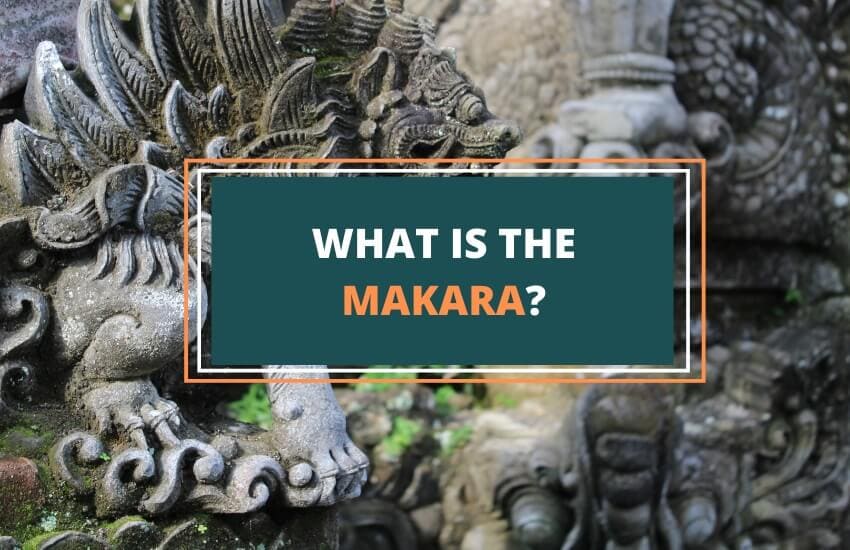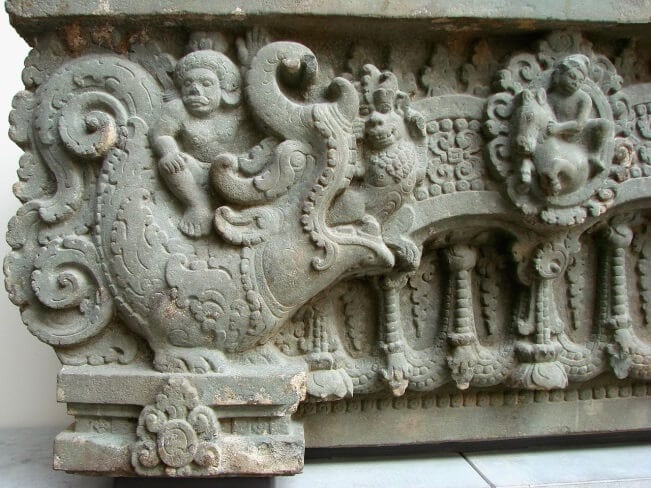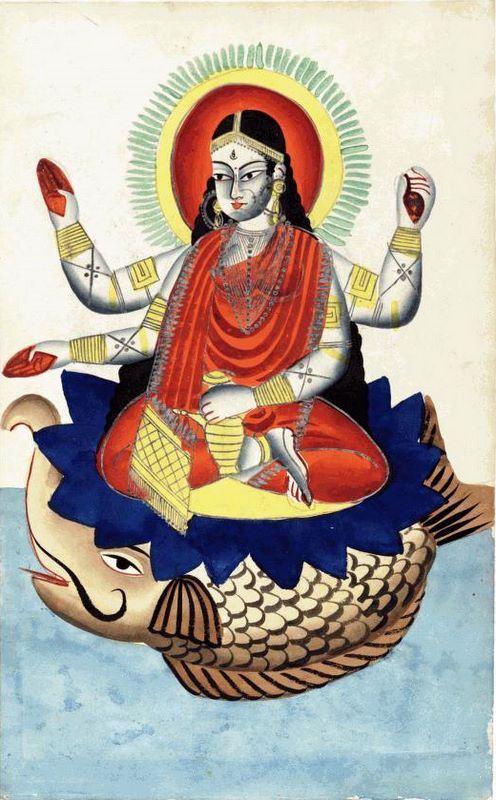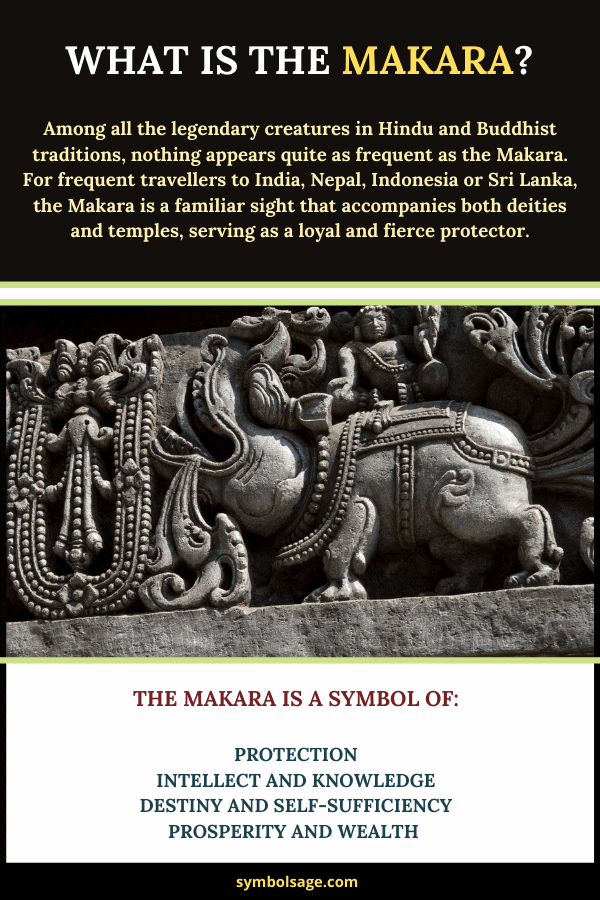
Table of Contents
Among all the legendary creatures in Hindu and Buddhist traditions, nothing appears quite as frequent as the Makara. For frequent travellers to India, Nepal, Indonesia or Sri Lanka, the Makara is a familiar sight that accompanies both deities and temples, serving as a loyal and fierce protector.
In this article, we will take a trip around the world to explore the different depictions of the legendary Makara, and what each of these renderings stand for.
Makara: A Hybrid Creature

The Makara is a hybrid creature, typically likened to a dragon. The Makara takes the general shape of a crocodile, only with features borrowed from a mishmash of other creatures, both terrestrial and aquatic.
In Hindu iconography, the Makara is usually depicted with its front half as a terrestrial animal: a deer, elephant, or stag, and its rear half as an aquatic animal which may be a seal or a fish, although sometimes the tail of snakes and peacocks also complete the Makara’s look.
A rather rich rendering of the hybrid animal comes from 18-century Buddhist Tibet, where bronze Makaras have the pointed jaws of a crocodile, fish scales, the tail of a peacock, an elephant trunk, boar tusks, and the eyes of a monkey. However, not all Makara depictions take on the general likeness of crocodiles. In Sri Lanka, the Makara resembles a dragon more than a crocodile.

In astrology, the Makara is depicted as the half-goat, half-fish icon of Capricorn, the symbol of earth and water combined. This is known as the Makara Rashi.
In some representations, the Makara is depicted with another symbolic animal, usually a lion, a serpent, or a naga (snake) emerging from its gaping mouth or getting swallowed by the creature.
Makaras as Temple Mainstays
It’s no longer surprising why statues of the mythical Makara is almost always present in Hindu and Buddhist temples, since the creature accompanies the legend of almost every major god.
For example, back in the Vedic times when Indra was considered the God of heaven, the water god Varuna is thought to have ridden the seas on Makara, which was loosely referred to as the water monster vehicle. River goddesses Ganga and Narmada also rode makaras as vehicles, as did the punisher god Varuda.
Hindu gods are sometimes depicted wearing Makara-shaped earrings called Makarakundalas. The Destroyer Shiva, the Preserver Vishnu, the Mother Goddess Chandi, and the Sun God Surya all wore Makarakundalas.
Makara as a Great Protector
In most modern temples, you would see the Makara flanking the corners of a temple to serve a rather practical purpose, which is to form part of a rainwater drainage system.
However, in more ancient temples especially in Indonesia, there is a symbolic reason for the presence of Makara guards at the gate and in entryways to throne rooms and other sacred areas. It is symbolic of the Makara’s spiritual duty as a protector of gods. You can even find one in the stupa of Sanchi, a world heritage site.
Makara Symbolism

Other than being great protectors, the Makaras also represent knowledge, destiny, and prosperity.
For one, crocodiles typically represent intellect and rationality when facing problems. Notice how crocodiles, when threatened, do not attack at once. They bide their time, unmoving for minutes, until their targets come close enough for them to strike swiftly and seamlessly. Appearing as pairs (such as in earrings), represent the two kinds of knowledge held as precious by Buddhists: intellect (samkhya) and intuitive or meditative intelligence (yoga).
Another notable thing that crocodiles do is that they leave their eggs after birth. Very rarely does it happen that they come back to tend and raise their young. This means Makaras symbolize destiny and self-sufficiency as crocodiles are left to swim and figure out their whole lives with only nature, and their own instincts, to guide them.
Finally, there is one depiction of the Makara where Lakshmi, a god associated with good luck, is seen sitting on a lotus, pulling out the tongue of an elephant-shaped Makara. This portrays Lakshmi’s image as the deity of prosperity, wellbeing, and wealth. The Makara in this imagery represents a state of necessary and unavoidable state of chaos before prosperity can emerge.
Wrapping Up
The next time you visit a Hindu or Buddhist temple, make sure to spot Makara, the Great Protector. Depicted in intriguing and interesting postures and actions, the Makara is among the most important legendary beings of the Asian world.








